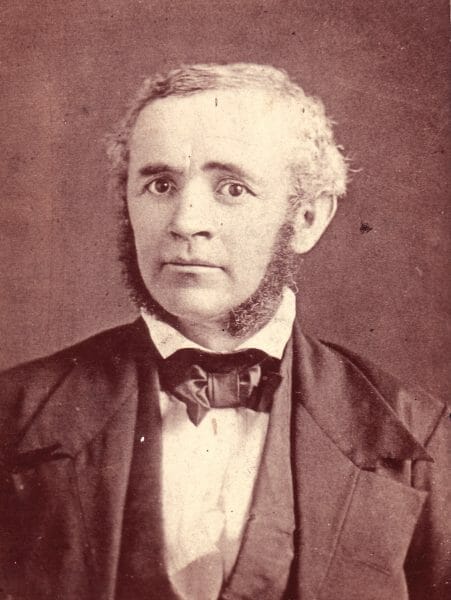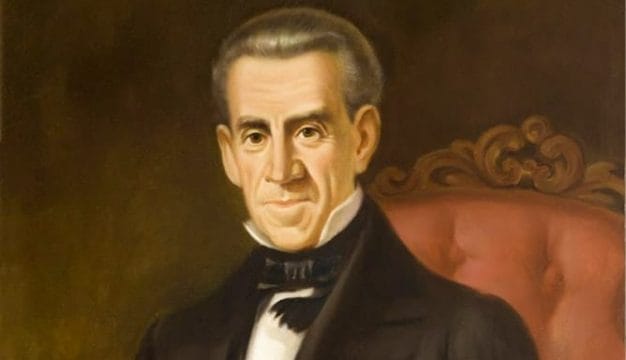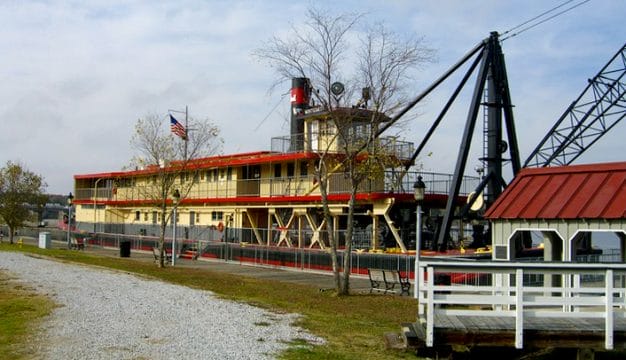Michael Tuomey
Michael Tuomey (1805-1857) was Alabama’s first state geologist, and his appointment to the position led to the creation of the Geological Survey of Alabama. Tuomey’s scientific description of the state’s geology was the beginning of a true understanding of its mineral resources, particularly the coal and iron ore that led to Birmingham’s rise as an industrial center.
 Michael Tuomey
Born in Cork, Ireland, on September 29, 1805, to Thomas and Nora Tuomey, Michael Tuomey became interested in the natural sciences through home schooling. By the age of 17, he had left home to teach in England and soon immigrated to the United States. Tuomey first tried his hand at farming in Pennsylvania. When that endeavor proved unsuccessful, he gained employment as a private tutor in Maryland. In April 1835, Tuomey entered the Rensselaer Polytechnic Institute in Troy, New York, and was awarded a bachelor’s degree that same year. After graduation, Tuomey went through a series of jobs—he was a private tutor in Maryland and a civil engineer and school teacher in Virginia—before finally becoming the founder of a school in Petersburg, Virginia. Tuomey married Sarah Handy in 1837, and the couple would have two daughters. Through his work in Petersburg in the early 1840s, Tuomey became well known in the scientific community and cultivated relationships with some of the foremost scientists of the time. Twice, he hosted noted British geologist Charles Lyell when the latter visited the United States. Such contacts helped Tuomey in gaining an appointment as State Geological Surveyor in South Carolina in 1844. Tuomey soon became frustrated, however, by the state government and its reluctance to fund more time for him to complete his surveying work. He was denied a request to extend field work, and his dissatisfaction finally led him to leave South Carolina.
Michael Tuomey
Born in Cork, Ireland, on September 29, 1805, to Thomas and Nora Tuomey, Michael Tuomey became interested in the natural sciences through home schooling. By the age of 17, he had left home to teach in England and soon immigrated to the United States. Tuomey first tried his hand at farming in Pennsylvania. When that endeavor proved unsuccessful, he gained employment as a private tutor in Maryland. In April 1835, Tuomey entered the Rensselaer Polytechnic Institute in Troy, New York, and was awarded a bachelor’s degree that same year. After graduation, Tuomey went through a series of jobs—he was a private tutor in Maryland and a civil engineer and school teacher in Virginia—before finally becoming the founder of a school in Petersburg, Virginia. Tuomey married Sarah Handy in 1837, and the couple would have two daughters. Through his work in Petersburg in the early 1840s, Tuomey became well known in the scientific community and cultivated relationships with some of the foremost scientists of the time. Twice, he hosted noted British geologist Charles Lyell when the latter visited the United States. Such contacts helped Tuomey in gaining an appointment as State Geological Surveyor in South Carolina in 1844. Tuomey soon became frustrated, however, by the state government and its reluctance to fund more time for him to complete his surveying work. He was denied a request to extend field work, and his dissatisfaction finally led him to leave South Carolina.
In 1846, the University of Alabama in Tuscaloosa created a faculty position in the fields of geology, mineralogy, and agricultural chemistry. This chair position also required the professor to use part of each year to work on a geological survey of the state. In 1847, Michael Tuomey became the first person to hold this position and led the way to increasing the state’s knowledge of its geology. He also contributed specimens to the Alabama Museum of Natural History, located at the university; unfortunately most of his contributions were lost when the university was burned during the Civil War. In 1848, he became the first state geologist, a position he held without pay for four years. His work in surveying Alabama’s geology led to a greater understanding of the mineral resources available to the state. Gov. Henry W. Collier praised Tuomey’s efforts and noted their importance to the economic and industrial future of the state.
Economic geology, which focuses on how geologic resources such as metal ores or coal can be used by society, was not Tuomey’s only interest with the state survey. He was a dedicated teacher and wished to further the scientific knowledge of Alabamians. Many of his geologic findings, such as his refutation that silver ore had been found in Alabama, were published in local newspapers of the day. More importantly to the state of Alabama, his work in defining coal bed and iron ore deposits were also chronicled in local papers. Some of his students, inspired by his example, went on to become state geologists themselves, working around the Southeast and as far away as Michigan.
Tuomey fell ill in the spring of 1857. He was diagnosed with heart disease and pneumonia by Mobile physician Josiah Clark Nott. He died March 30, 1857, and was buried in Evergreen Cemetery in Tuscaloosa.
Additional Resources
Dean, Lewis S. “Michael Tuomey and the Pursuit of a Geological Survey of Alabama, 1847-1857.” Alabama Review 44 (April 1991): 101-11.
Lacefield, Jim. Lost Worlds in Alabama Rocks: A Guide to the State’s Ancient Life and Landscapes. Revised edition. Tuscaloosa: Alabama Geological Society, 2013.
Tuomey, Michael. The Papers of Michael Tuomey. Edited by Lewis S. Dean. Spartanburg: Reprint Company, 2001.



